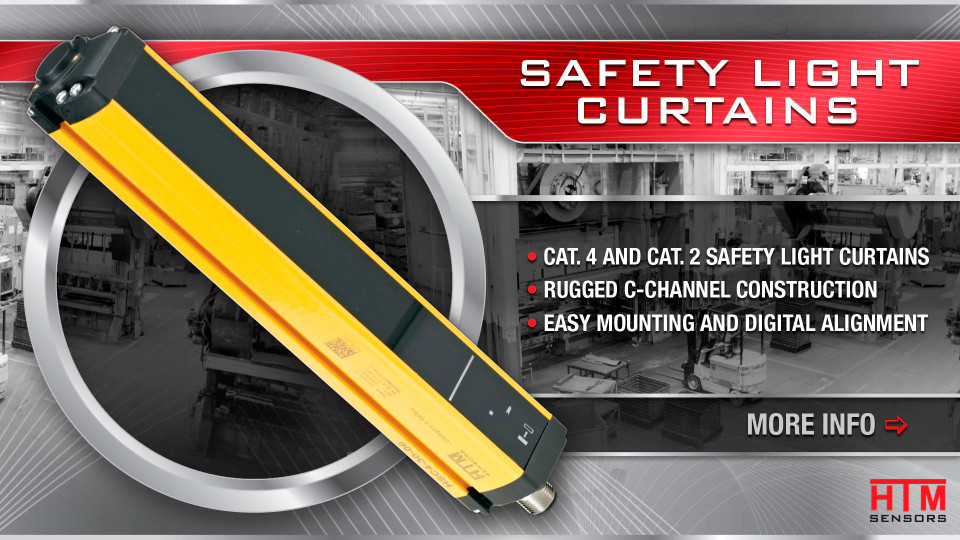Robotics has become commonplace in manufacturing as a leading indicator of broader machine automation use. This growth is most evident in the automotive sector where robotic automation accounted for nearly a third of new installations in 2018 according to Statista.
Safety for those working with or alongside of automated machines is a constant concern that is being addressed with the light curtain sensor. But downtime that results from machine stoppage resulting from the tripping of a safety light curtain.
When it comes to safety light curtains, manufacturers are exploring the use of the devices in conjunction with a programmable logic controller (PLC) to operate as a safety alert device. This opens possibilities of real-time data monitoring and alarms of a human breach to an unsafe machine area. The manufacturer could set the PLC to trigger a slow down or stopping of an entire machine sequence where different automation processes are linked to the machine registering the light sensor break.
The light curtain sensor can clearly contribute as much to downtime elimination as to safety if properly set up as part of a larger system based on stop time measurement. As a presence sensing device that can trigger a response from a machine, the safety light curtain only triggers the machine stoppage. But the time it takes the machine to come to a full stop and how long it takes to restart once the source that originally broke the beam has receded are all contributing factors to potential costly downtime.
Stop time measurement informs minimum safe mounting distance from the machine for human protection. This calculation works in conjunction with the OSHA (Occupational Safety and Health Administration) formula and the ANSI (American National Standards Institute) formula as defined by OSHA standards.
These calculations look at the approach speed of people breaking the beam, how fast the light curtain takes to respond and finally, how fast it takes the machine to stop. This will vary based on whether it’s a body part like a hand or the person’s entire body. The design of the light curtain sensor will also play an important part in those calculations.
Fast moving machine often have a longer stop time “coast-down time” to prevent damage to the machine. Many robotics processes have a series of steps they go through in a process that completes a cycle. Whether the robot can stop in the middle of that cycle when the zone of a safety light curtain is breached is dependent on the robot design and the process.
The process for what would be sensed by the machine as an emergency shutdown is due to the signal from a light curtain sensor to the machine’s programmable logic controller. The restart process isn’t always as simple as the signal that the sensor’s beam has been restored since automation cycles may not always be capable of picking up where they left off. This can result in a fault action that requires operator intervention, which leads to downtime.
While understanding these factors and providing relevant data capture are not necessarily in the scope of safety light curtains, manufactures are utilizing IO links to help ensure faster sensor operation and recovery. This helps to increase operator safety while also helping to reduce potential downtime.
Light curtain sensor placement will always be the starting point that affects all these aspects around safety and downtime. By choosing the right safety light curtain industrial automation users can create the foundation for a more holistic system tailored to specific needs and environments.
 Canadian Dollars
Canadian Dollars
 USD
USD

